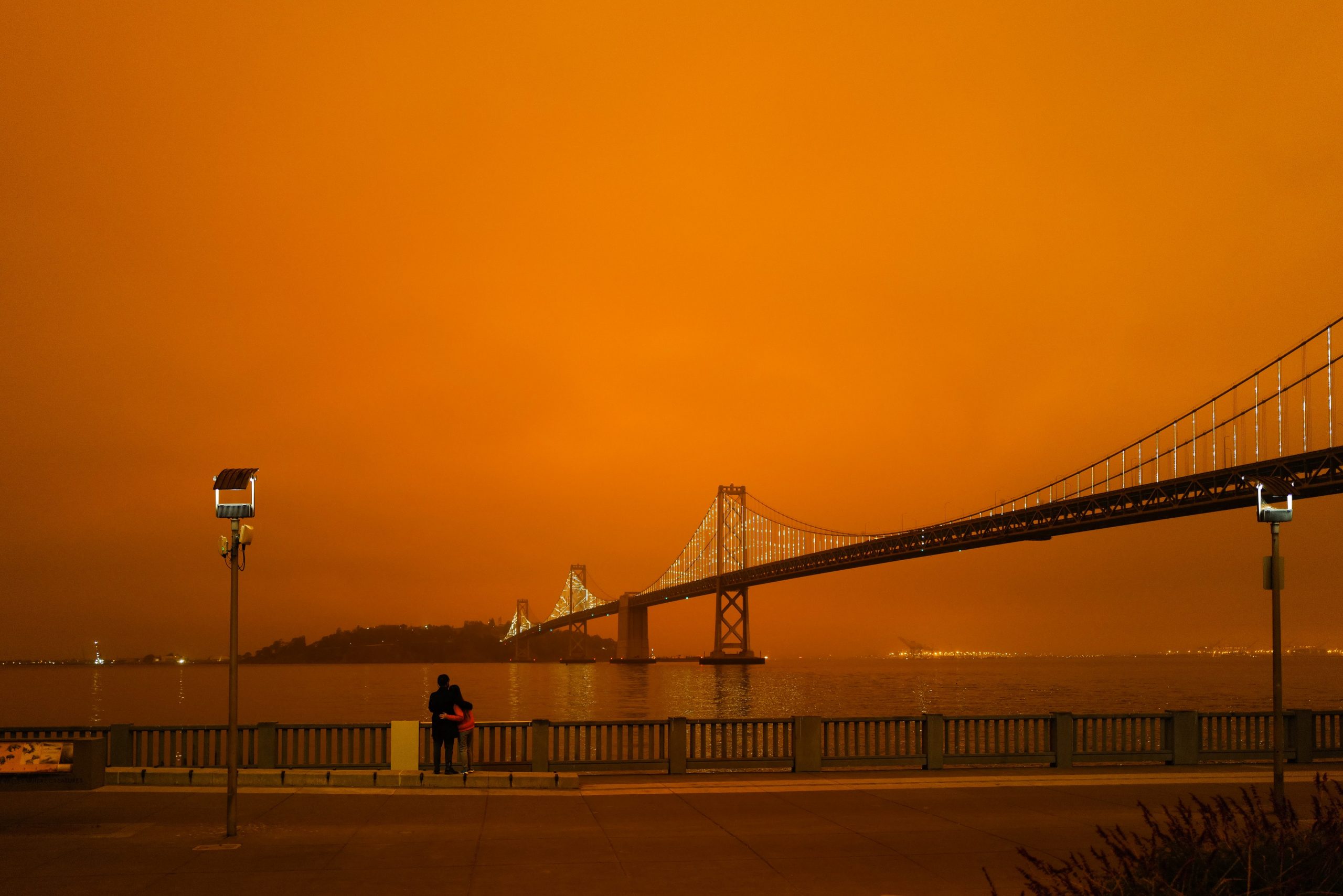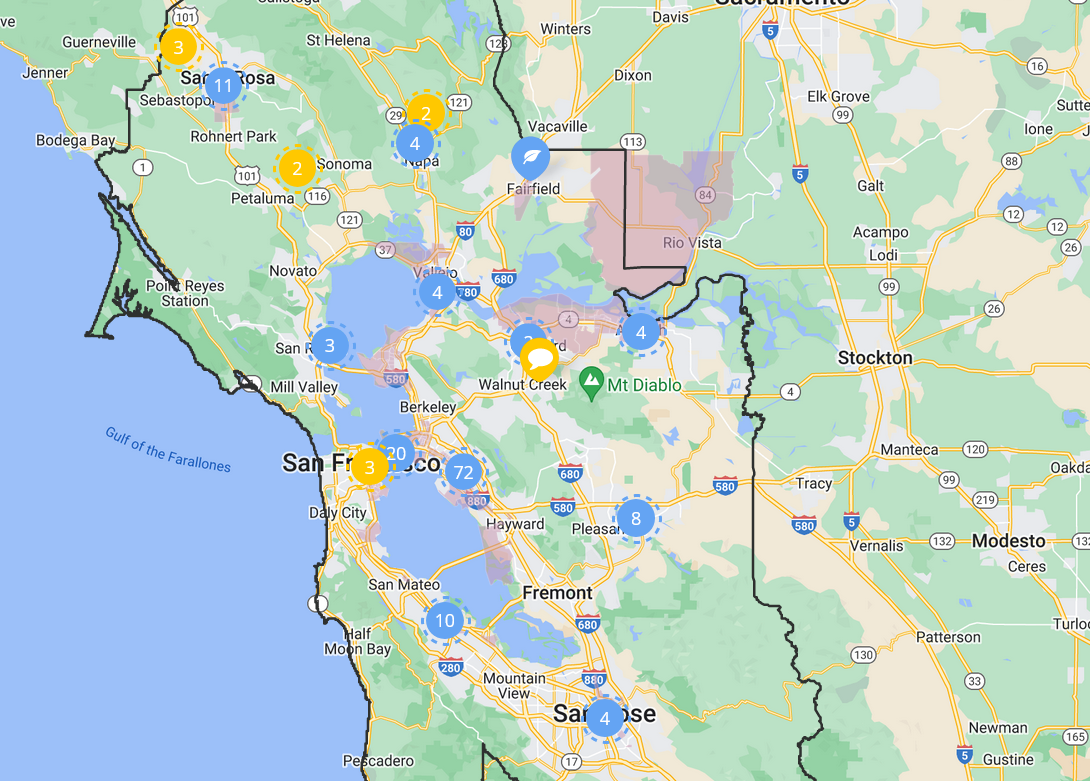
All-day twilight caused by wildfire smoke. Photo: Thom Milkovic
Communities around the Bay Area are meeting the new reality of “smoke season” with plans for neighborhood Clean Air Centers, sometimes on a pop-up basis. Retrofits to facilities, as well as portable filtration units, can now be funded through a California Air Resources Board (CARB) program authorized by AB 836 (Wicks). The Bay Area Air Quality Management District is now distributing AB 836 grant money to counties, usually through the county’s Office of Emergency Services.
Several Air District programs have already been providing portable air filtration units. The new state funds are specifically targeted for vulnerable communities – both traditionally underserved communities and those which are often heavily impacted by smoke.
The Air District received $3 million out of the state program budget of $5 million over 5 years. The state program funds have been allocated by county, based on past smoke seasons and the California Enviroscreen designation of underserved communities. The first awards are being made now.
Areana Flores, the Senior Staff Specialist in charge of coordinating AB 836 funding for the region, stated that the agency’s goal is to start placing orders for portable equipment in June. Counties may order units pre-approved by CARB, or use their awards to shop from the Air District’s list of acceptable equipment.
Counties have been consulting with local agencies and nonprofits to determine appropriate locations for either retrofits or deployment of portable units. Because retrofits are expensive, most communities are likely to purchase portable units that can be pre-deployed — stored and used at designated locations such as libraries or community centers — or pulled from central storage to set up temporary clean air facilities as needed, based on smoke movement.

The Air District’s Community Identified Clean Air Centers map. CalEnviroScreen’s vulnerable areas indicated in pink (link to full map in text below).
In San Francisco, funds will “benefit overall community organizations, and places where residents usually go during a ‘blue sky’ day”, said Adrienne Bechelli, Deputy Director of the Department of Emergency Management. “In the past, activating new locations just for a crisis resulted in low turnout – people weren’t as comfortable if they weren’t familiar with things like parking or knowing the staff.” The department is working with agencies and organizations which operate the selected facilities to determine what equipment is suitable, as smaller facilities can’t afford electrical upgrades that might be needed for some units.
Community members have an opportunity to nominate locations that will serve their neediest neighborhoods by using an interactive Community Identified Clean Air Centers map provided by the Air District. Suggested sites can be used as guidance as counties choose which locations to equip for continuing use as Clear Air Centers, or arrange to use them on a temporary basis when the need arises. As Flores noted, “The map would . . . also serve as a tool for making the recommendation for more funding to the Legislature if we are unable to fulfill the proposed sites.”

